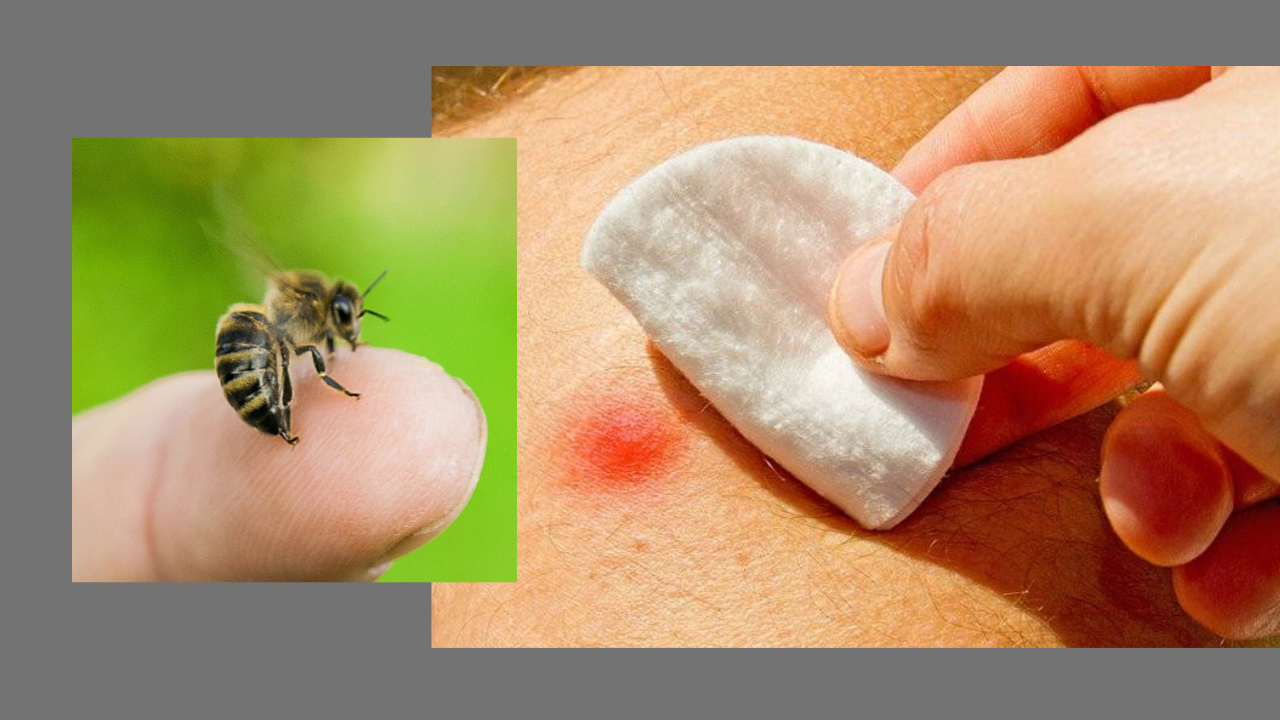Bee sting allergy
People with a bee sting allergy often worry about spending time outdoors in the summer months. People who have never been stung may fear that they could be allergic.
For most people, a bee sting only produces temporary pain and irritation at the site of the sting.
For others, bee sting allergy cause an allergic reaction that can range from mild to severe. In extreme cases, a bee sting can cause life-threatening anaphylaxis.
When a bee sting occurs, its sharp, barbed stinger remains lodged in the skin. This stinger can release venom for up to a minute after the bee has stung.
Bee venom contains proteins that affect the skin cells and immune system, resulting in pain and swelling at the site of the sting, even if a person is not allergic to the venom.
In those who are allergic to bee stings, the venom triggers a more severe immune system reaction. These people may not have an allergic reaction the first time they are stung but may have an allergic reaction to a second bee sting.
If a person is allergic, the bee sting will cause the immune system to produce a type of antibody called immunoglobulin E (IgE). Usually, IgE protects the body from dangerous substances, such as viruses and parasites.
Symptoms of bee sting allergy
Mild reaction
The majority of bee sting symptoms are very mild and do not require medical attention. They are limited to the site of the sting itself, and include:
a sharp, burning pain
an area of raised, red skin
slight swelling
Moderate reaction
In a person with a moderate bee sting reaction, the body has a stronger response to bee venom, called a large local reaction (LLR). In such cases, the symptoms can take over a week to heal completely.
Symptoms include severe redness around the sting, as well as swelling around the sting, which may gradually increase in size to a diameter of 10 centimeters (cm)or more over a period of 24–48 hours
If a person experiences a LLR, there is a 5-10%Trusted Source risk that they will develop a systemic allergic reaction to a sting in the future.
Severe allergic reaction
In certain individuals, a bee sting allergy can cause anaphylaxis, which is a life-threatening allergic reaction requiring emergency medical treatment. The following symptoms of anaphylaxis develop rapidly:
itchy, red hives on the skin
pale or flushed skin
a swollen throat or tongue
difficulty breathing
abdominal pain
nausea and vomiting
dizziness
a weak, rapid pulse
loss of consciousness
Instant treatment
After a bee sting allergy, remove the stinger as soon as possible, taking care to avoid squeezing the venom sac. A person may want to use a pair of tweezers to do this. Removing the stinger will limit the amount of venom released into the bloodstream.
Use a cold compress, apply steroid ointments, and take antihistamines to help reduce itchiness and inflammation.
People who have a severe allergic reaction to a bee sting have a 25% to 65% chance of anaphylaxis the next time they’re stung. Talk to your doctor or an allergy specialist about prevention measures such as immunotherapy (“allergy shots”) to avoid a similar reaction in case you get stung again.
Multiple bee stings allergy
Generally, insects such as bees and wasps aren’t aggressive and only sting in self-defense. In most cases, this results in one or perhaps a few stings. In some cases a person will disrupt a hive or swarm of bees and get multiple stings. Some types of bees — such as Africanized honeybees — are more likely than are other bees to swarm, stinging in a group.
If you get stung more than a dozen times, the accumulation of venom may induce a toxic reaction and make you feel quite sick. Signs and symptoms include:
- Nausea, vomiting or diarrhea
- Headache
- A feeling of spinning (vertigo)
- Convulsions
- Fever
- Dizziness or fainting
Multiple stings can be a medical emergency in children, older adults, and people who have heart or breathing problems.
When to see a doctor
In most cases, bee sting allergy don’t require a visit to your doctor. In more-severe cases, you’ll need immediate care.
Reference:
https://www.mayoclinic.org/diseases-conditions/bee-stings/symptoms-causes/




